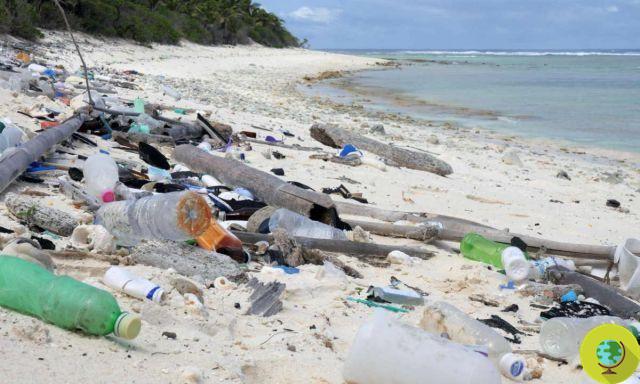A study reveals that plastic waste left on beaches poses a new threat to the turtle population
Plastic waste left on beaches poses a new threat to the turtle population. Researcher Jennifer Lavers spent weeks sifting through the trash from the beaches of two remote islands - and what she has discovered could have alarming consequences for these animals' lives.
In 2017, many were shocked to learn that the beaches of the uninhabited Henderson Island (South Pacific Ocean) had become a plastic waste dump. Not long after, scientists discovered some 414 million pieces of plastic washed ashore on the beaches of the Cocos Islands (off Western Australia). Now, recent research has found that the buildup of plastic parts is significantly increasing sand temperatures on beaches.
Plastic almost creates an insulation, a barrier, which influences the passage of UV light, wind and humidity - explains the doctor Jennifer Lavers, of the University of Tasmania. - Plastic significantly increases the temperature of the sand present on the beach, up to 2,45 ° C. This has important consequences on the animal species that live, feed and reproduce in the sand.
The habitat represented by the islands is of vital importance for a large number of animal species that live in the sand dunes - such as crabs and sea turtles. In particular, turtle hatchlings are more affected by plastic waste, because their sex is determined by the temperature of the sand in which the eggs have been incubated: higher temperatures mean more female turtles.
An increase in the temperature of the sand contributes to an increase in the number of female turtles and a decrease in the number of males. This obviously has serious consequences on their reproductive activity - especially if we consider that turtles are endangered species.
But not only are turtles threatened by the presence of plastic on the beaches. Other small invertebrate animals, called meiofauna, also live in the sand and represent the food for particular birds called chionids, which usually stop on oceanic beaches during the migration period: with the disappearance of the meiofauna, an important link in the food chain is missing. marine ecosystem, which poses a problem for the birds and fish that live on the islands.

@Silke Stuckenbrock/University of Tasmania
These are practically uninhabited islands, where plastic accumulates dragged by sea currents - explains the researcher. - These pristine beaches basically act like a sieve, or huge litter box, collecting all the plastic that floats in ocean currents. Since these are remote and uninhabited beaches, if there were not someone to clean them and take care of them, the plastic would remain here to accumulate undisturbed.
Fonte: University of Tasmania
- We also recommend:
- The new Adidas and Lego shoes made with the plastic of the oceans that you can customize as you want
- The sailboat that cleans the oceans of plastic (and recycles them on board)
- Stop plastic bottles: the petition for Coca-Cola, Nestlé and PepsiCo that we should all sign


























